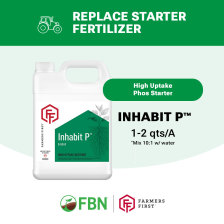How to Identify Common Root Rot
Identifying common root rot can be tricky due to its symptoms' similarity with other root diseases. However, understanding the specific signs can facilitate early detection and management.
The most evident sign of common root rot is the browning or darkening of the subcrown internode and the crown. This browning typically starts at the root tip and ascends towards the crown. In extreme cases, the entire root system, including the crown, may turn black. The disease may also stunt the growth of affected plants and, in some instances, cause premature death.
Beyond the physical appearance, other signs of common root rot include the presence of small, black fruiting bodies (pycnidia) on the surface of the affected roots and crowns. These pycnidia produce spores that propagate the disease.

